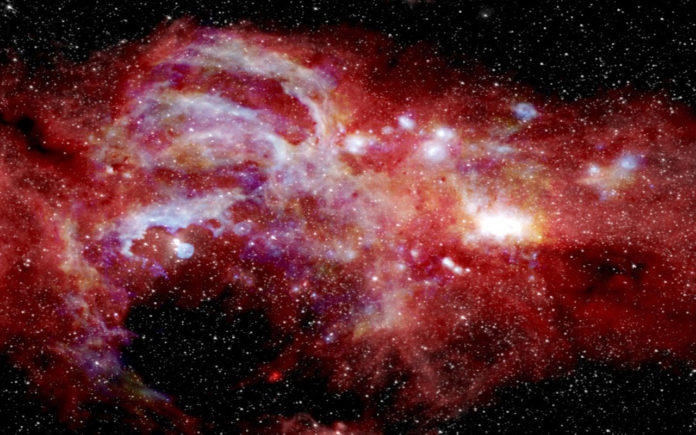NASA’s Stratospheric Observatory for Infrared Astronomy (SOFIA) recently captured a new panoramic image of the center of our galaxy like never seen before.
From July 1 to July 11 of 2019, researchers led by Matt Hankins, a postdoctoral scholar at Caltech, took SOFIA on several flights to capture new infrared views of the brightest portions of the center of our galaxy. The new image shows that SOFIA data were taken at mid-infrared wavelengths of 25 and 37 microns overlaid on previous imagery taken by the Herschel Space Observatory.
Moreover, the SOFIA maps reveal dust that has been heated by many of the most massive stars in the region, including some that are up to 100 times as massive as our sun.

Although previous infrared maps were unable to resolve several dust features, so scientists expect that these new maps allow researchers to study these bright sources at a level of detail not possible before.
Hankins said, “We are filling in the most active star-forming regions of the galactic center that were missing in previous images.”
“We still don’t understand how massive stars form in this incredibly dense region of our galaxy. While the galactic center has numerous massive stars that are seen in the SOFIA maps, the theory suggests the region should have many more stars than are presently known. Examining this discrepancy is an important aim of our study.”
“By observing at mid-infrared wavelengths, SOFIA is uniquely positioned to not only see through the cool dust but also to pick up the signatures of warm dust buried in the galactic center.”
“Planning JWST observations of infrared light in this region will be challenging without the SOFIA data. These maps will be crucial for studying young, massive stars in the center of our galaxy in the JWST era.”
An overview paper highlighting the initial results has been submitted for publication to The Astrophysical Journal.
